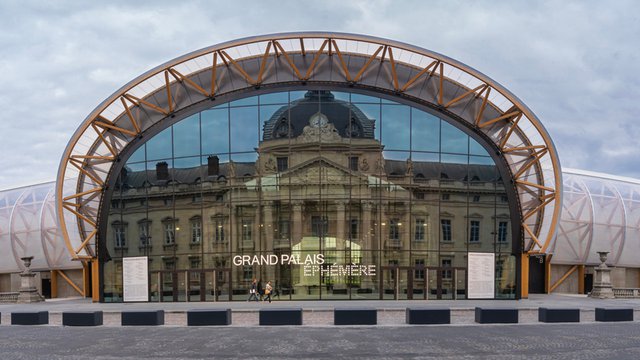

The Eiffel Tower was inaugurated in 1899, on the occasion of the Universal Exhibition in Paris. It was expected to stand for a maximum of 20 years, but today it remains one of the most visited monuments in the world. Its creation is one of the clearest examples of ephemeral architecture of the late 19th century. It is therefore not only an emblem of the "City of Light", but also of this style of construction. And it is present, like other great passing works, in the classrooms of every self-respecting Master Construction Management or Master’s Degree in Architecture.
Here we explain the principles on which this architectural technique is based and the historical legacy it has left behind.
Most of these buildings are intended to last for a limited period of time and, in many cases, already predefined before the end of their construction. Moreover, not all of them are necessarily intended to be displayed only outdoors. New educational initiatives demonstrate that their constructive interest has transcended the external and that these works can also be developed indoors.
The passage of time has allowed ephemeral architectural works to evolve, without neglecting a series of basic principles that are maintained from one era to the next:
The development of new techniques and the appearance of new materials has boosted and expanded the number of applications of ephemeral architecture. Originally, it was guided by religious, political, military or leisure purposes and, ultimately, had a commemorative and celebratory purpose.
Today, it can also be used for the creation of nomadic housing and commercial establishments, or for emergency construction to provide a rapid response to any spontaneous needs that may arise (e.g. in humanitarian crisis situations). In certain cases, obsolescent works are also built, with the intention that they can be easily dismantled, and their various components can be easily reused in other constructions.
Over the years, various historical circumstances and milestones have been immortalised by ephemeral works. The following are examples that have been repeated in many geographical areas:
The recent construction of field hospitals in China and Spain in just a few days, in response to the need posed by the Covid-19 pandemic, shows that ephemeral architecture is facing an increasingly demanding present and future.
From now on, this architectural discipline will need to be more effective than gimmicky and look for more solutions to vital needs, when in the past it was more intended to offer alternatives for leisure and free time.
A wide range of opportunities is opening up for all aspiring architects who seek to enhance the value of the ephemeral, so if you are interested in working in this field, do not hesitate to consult the academic offer that Universidad Europea has for you.